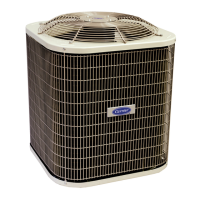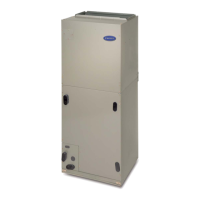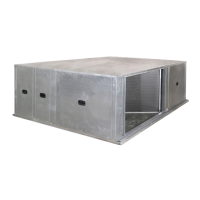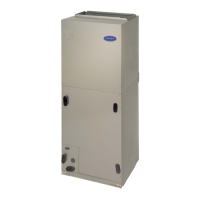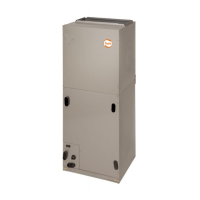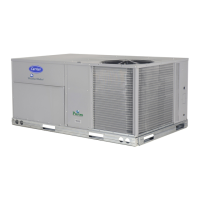8
12”
(300mm)
FLOW
COLLAR
FRONT
FRESH AIR
FROM OUTSIDE
STALE AIR
TO OUTSIDE
TEMPORARY
FLOW COLLAR
TEMPORARY
FLOW COLLAR
RIGHT SIDE VIEW RIGHT SIDE VIEW
30”
(760mm)
12”
(300mm)
12”
(300mm)
12”
(300mm)
12”
(300mm)
FRESH AIR
FROM OUTSIDE
STALE AIR
TO OUTSIDE
TEMPORARY
FLOW COLLAR
FRONT
BALANCING
DAMPER
BALANCING
DAMPER
BALANCING
DAMPER
A98425
Fig. 15 -- Balancing HRVCCSVU and HRVCCLVU
BALANCING HRV
Balancing intake and exhaust airflow is very important for proper
system operation and optimum performance when applying an
HRV. Unit balancing prevents a positive and/or negative pressure
within the home. Balancing the HRV is done by applying
temporary flow collars and permanent balancing dampers to the
fresh air intake and stale air exhaust ducts (See Fig. 15).
NOTE: T emporary flow collars are not needed with the new
HRVCCLHA models since the air flow pressure taps are
incorporated in the access door (see Fig. 16).
Fresh air flow
Exhaust Air Flow
A05264
Fig. 16 -- Balancing HRVCCLHA
Airflow is determined by connecting a magnehelic gauge to the
temporary flow collar (see Fig. 17). Both flow collars and
magnehelic gauge are included in the accessory start--up balancing
kit.
MAX
MIN
AIRFLOW
DIRECTION
CONVERSION
CHART
AX
IN
ZEROING SCREW
FLOW
COLLA
A98400
Fig. 17 -- Magnehelic Gauge
If supply-- air from outside is greater than exhaust--air from the
house, an imbalance can result over pressurizing the home. If
exhaust--air is greater than supply--air, combustion appliances may
backdraft, bringing exhaust fumes into the house. A balanced
condition will ensure optimum performance, provide satisfied
customers, and avoid expensive callbacks.
Before proceeding with balancing, all windows, doors, and
fireplace flues should be tightly closed. No exhaust systems such as
range top exhausts, dryer exhaust, fume hoods, bath or roof fans
should be in operation. The forced-- air furnace (if used for
circulation) should be operating in continuous fan mode for normal
operating speed.
Balancing Dampers
Balancing dampers (sometimes called butterfly dampers) are
provided with the HRVCCLHA. The dampers for the
HRVCCSVU and HRVCCLVU are field supplied and should be
permanently located in fresh--air intake and stale--air exhaust ducts
between HRV and exterior wall (see Fig. 15 and 16). Some field
modification may be required to ensure proper installation of
HRV

